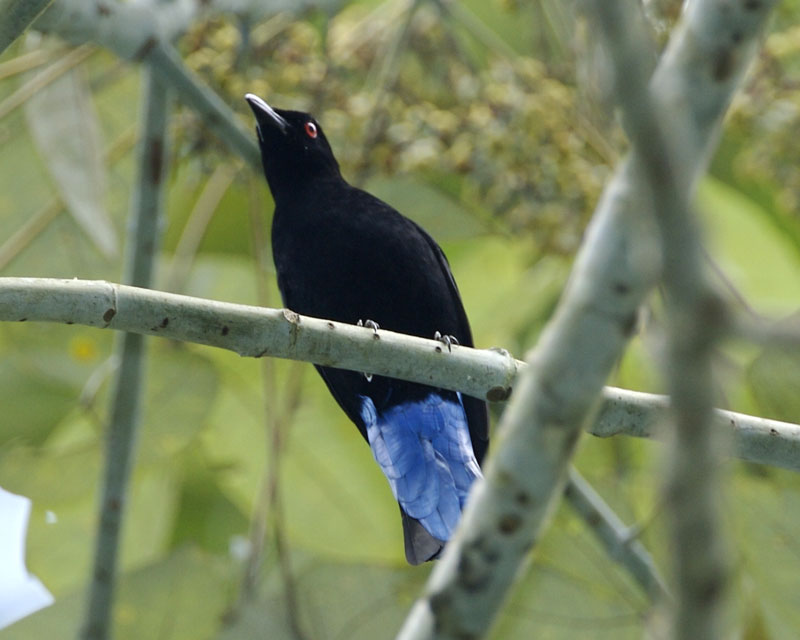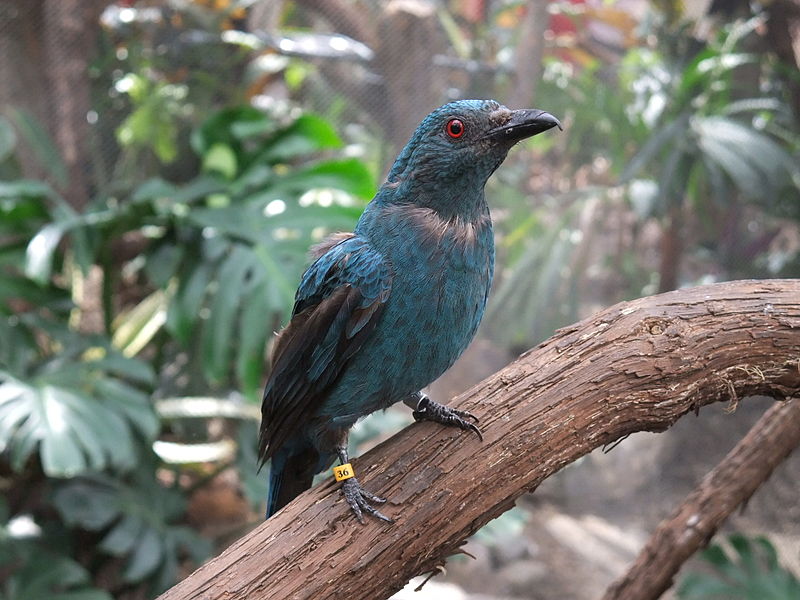Distinguishing features
The iris is crimson and eyelids pinkish; the bill, legs and claws are black, and mouth a flesh- colour. Marked sexual dimorphism is evident. The male is a shining ultramarine-blue with lilac reflections on its upper plumage, lesser wing coverts, and under tail coverts, while the sides of its head and the whole lower plumage are deep black; greater wing-coverts, quills, and tail black, and some of the coverts tipped with blue, and the middle tail-feathers glossed with blue.
The upper plumage, the lesser wing coverts, and the lower tail coverts of the female are brownish blue, with the edges of the feathers brighter. The middle tail feathers and the outer webs of all the others, except the outer pair, like the upper plumage, and remainder of tail dark brown. primaries and secondaries dark brown. The greater wing coverts, primary coverts, and tertiaries dark brown, with a blue tinge on the outer webs. Sides of the head and whole lower plumage blue, very similar to the upper parts. The young resemble the female. The male changes into adult plumage in March, the change taking place without a moult. The feathers of the upper parts first become fringed with bright blue, then the tail coverts change, and finally the lower plumage changes. Young birds with the lower plumage mixed black and dull blue, and the upper plumage like that of the adult are frequently seen. (Wikipedia)
Size
- Up to 27 cm (Length of specimen)
Wingspan
- Wingspan data is not yet available.
Synonyms
Distribution
Distribution and habitat preferences
They are found in Sri Lanka; the western coast of India from Travancore up to the latitude of Belgaum and Sawantwadi; Sikkim and the lower ranges of the Himalayas to Dibrugarh in Assam; the Khasi Hills; Cachar; Manipur; Arrakan; Bago and Taninthayi Division in Burma; the Andaman and Nicobar Islands.
In southeast Asia it occurs throughout most of Indochina (including Peninsular Malaysia), Sumatra, Borneo, Java, Palawan, and on smaller nearby islands. In the Indian part of its range this species is confined to the evergreen forests of the hills and plains, but elsewhere it is regular in various types of humid and deciduous forests from lowlands up to about 1,600 metres.
It is generally found on the larger forest-trees. (Wikipedia)
Diet
It eats fruit, nectar and some insects. (Wikipedia)


